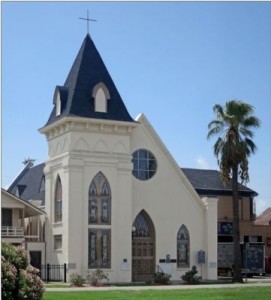National Museum for African American History announces Sep. 24 public opening
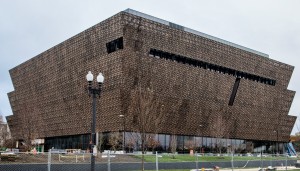 The Smithsonian has announced that the National Museum of African American History and Culture (NMAAHC) will open to the public this fall on Saturday, September 24.
The Smithsonian has announced that the National Museum of African American History and Culture (NMAAHC) will open to the public this fall on Saturday, September 24.
The opening will be the focus of a week-long celebration that begins with a dedication ceremony lead by President Obama on the 24th and will include extended visiting hours and a three-day festival on the National Mall showcasing popular music, literature, dance and film. Also planned are events co-hosted by other museums around the country and the world.
“After 13 years of hard work and dedication on the part of so many, I am thrilled that we now have this good news to share with the nation and the world,” said Lonnie Bunch, the museum’s founding director. “In a few short months visitors will walk through the doors of the museum and see that it is a place for all people. We are prepared to offer exhibitions and programs to unite and capture the attention of millions of people worldwide. It will be a place for healing and reconciliation, a place where everyone can explore the story of America through the lens of the African American experience.”
“We look forward to the opening of this enormously important new museum,” said David Skorton, Smithsonian Secretary. “The NMAAHC furthers the Smithsonian’s commitment to telling America’s story in all its dimensions.”
The museum has built a collection of 11 exhibits to trace the history of slavery, segregation, civil rights and African-Americans’ achievements in the arts, entertainment, sports, the military and the wider culture. Artifacts on loan from other institutions will also be on display, such as two documents signed by President Abraham Lincoln: the 13th Amendment and the Emancipation Proclamation.
The NMAAHC’s 400,000 square-foot building on the National Mall is located on a five-acre site on Constitution Avenue NW between 14th and 15th streets NW adjacent to the Washington Monument and across 14th Street from the American History museum. The museum consists of five levels above ground and four below. The museum will have exhibition galleries, an education center, a theater, auditorium, café, and gift shop, as well as staff offices.
Digital archive: “The Exhibit of American Negroes,” rare portraits of African American life in 1900
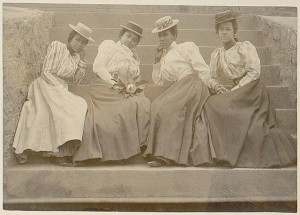 The “Exhibit of American Negroes” is a reconstruction of highlights from an exhibit of the same name put together by W. E. B. DuBois, Thomas Calloway and the Historic Black Colleges for the Paris 1900 International Exposition. The original exhibit included thousands of photographs, as well as hundreds of books, pamphlets and assorted documents chronicling the experience of African Americans up to the year 1900.
The “Exhibit of American Negroes” is a reconstruction of highlights from an exhibit of the same name put together by W. E. B. DuBois, Thomas Calloway and the Historic Black Colleges for the Paris 1900 International Exposition. The original exhibit included thousands of photographs, as well as hundreds of books, pamphlets and assorted documents chronicling the experience of African Americans up to the year 1900.
The materials included in this reconstruction represent an overview of one of America’s great collections of African-American history. Drawn primarily from materials in the Library of Congress, it was assembled and edited by Professor Eugene F. Provenzo, Jr., School of Education, University of Miami.
The exhibit came at a difficult time for African Americans. Slavery had been abolished just 35 years earlier, and lynchings were at an all-time high. Not surprisingly it was largely ignored by mainstream American newspapers. Nonetheless it is a fascinating picture of African American life at the turn of the century.
The landmark 1900 World’s Fair was held for 7 months in Paris and attended by more than 48 million people. The Exhibit of American Negroes, which was housed at the World’s Fair, was to showcase African American life, achievement and contributions to society. Dubois described it as “an honest straightforward exhibit of a small nation of people, picturing their life and development without apology or gloss, and above all made by themselves. In a way this marks an era in the history of the Negroes of America.”
The exhibit included more than 500 photos as well as black scholarly work, official paperwork displaying black inventions and documentation on the progress of blacks since the Civil War.
Date change: TIPHC exhibit opening Thursday, Feb. 11
Reedy Chapel, Galveston First AME church in Texas
The Texas Institute for the Preservation of History and Culture will now open its new exhibit for Black History Month on Thursday, Feb. 11. at 2 p.m.
“Hallowed Grounds, Sites of African American Memories” is a photo exhibit of black heritage sites around Texas, including East Austin, Freedmen’s Town and Independence Heights in Houston, Reedy Chapel in Galveston, Zion Hill in Nacogdoches, Prairie View/Alta Vista, an architectural student display, and much more.
The exhibit will be on display in the TIPHC Gallery at the School of Architecture (Kennedy Building) through March 4 and is free and open to the public.
For more information, contact Michael Hurd, TIPHC director, mdhurd@pvamu.edu, 936-261-9836.
Texas A&M spending $120 million on new veterinary building; will partner with PV, other system campuses
Texas A&M University is spending $120 million on a new building for its College Station veterinary school and creating partnerships with four sister campuses, including Prairie View, in an effort to boost enrollment of minority and rural students and to increase the supply of veterinarians who focus on the livestock industry.
“Texas agriculture feeds and clothes the country,” said John Sharp, chancellor of the A&M System. “We will always need small-animal veterinarians to take care of our pets, but we also need more large-animal veterinarians helping to protect our state’s agricultural economy.”
The new building, funded by bonds backed by the state’s multi-billion-dollar Permanent University Fund, is expected to be finished in June. It will allow the College of Veterinary Medicine & Biomedical Sciences to increase enrollment of the entering class above the cap of 132 that accreditors have imposed for years, said Eleanor Green, the school’s dean. She declined to offer an estimate of future enrollment, explaining that she didn’t want to get ahead of a committee working on a recommendation.
The veterinary school, which is the only one in the state, is developing partnerships with West Texas A&M in the Panhandle town of Canyon, Prairie View A&M northwest of Houston, A&M-Kingsville in South Texas and Tarleton State in Stephenville, about 150 miles north of Austin. Some faculty members — officials declined to estimate how many — from the veterinary school will be stationed at those campuses to enhance undergraduate education and research in hopes of helping more students who graduate from those schools get accepted to the four-year veterinarian program in College Station.
Many students at the four schools are black, Hispanic or hail from rural areas, officials said.
Read the Austin American-Statesman story here.
“Struggle and Success: African Americans in Texas,” free e-book from TSHA
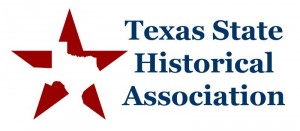 The Texas State Historical Association’s Handbook of Texas Online, the authoritative encyclopedia of Texas history, geography, and culture, has released the Handbook of African American Texas “e-Book,” entitled “Struggle and Success: African Americans in Texas,” a glimpse of the in-depth online resource detailing the history of African Americans in Texas.
The Texas State Historical Association’s Handbook of Texas Online, the authoritative encyclopedia of Texas history, geography, and culture, has released the Handbook of African American Texas “e-Book,” entitled “Struggle and Success: African Americans in Texas,” a glimpse of the in-depth online resource detailing the history of African Americans in Texas.
The Handbook features more than 850 entries that chronicle the individuals, communities, businesses, institutions, organizations, and events that comprise the African American experience and its significant contribution to the heritage and culture of the Lone Star State.
“African Americans have made significant contributions to the growth and development of Texas,” said Merline Pitre, project director of the Handbook of African American Texas and history professor at Texas Southern University. “This publication acknowledges the struggles and accomplishments of blacks in Texas and the need to preserve this critical history.
“This Handbook was initiated to capture, create greater awareness, and increase appreciation for the roles and contributions that Afro-Texan individuals, groups, and organizations have made to their neighborhoods, cities, state, nation and beyond.”
Historians from across the state contributed new scholarship in the making of this resource, and the Handbook of African American Texas will continue to add new articles and images in the future.
TBHPP Bookshelf
Published 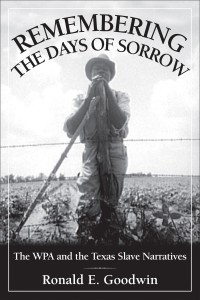 scholarship on black history in Texas is growing and we’d like to share with you some suggested readings, both current and past, from some of the preeminent history scholars in Texas and beyond. We invite you to take a look at our bookshelf page — including a featured selection — and check back as the list grows. A different selection will be featured each week. We welcome suggestions and reviews. This week, we offer, Remembering the Days of Sorrow, by PV professor Ron Goodwin. The book allows the voices of Texas’s former slaves to resonate to a new generation as they remembered what it was like to suffer under the yoke of slavery as well as the yoke of old age and poverty in the Great Depression of the 1930s.
scholarship on black history in Texas is growing and we’d like to share with you some suggested readings, both current and past, from some of the preeminent history scholars in Texas and beyond. We invite you to take a look at our bookshelf page — including a featured selection — and check back as the list grows. A different selection will be featured each week. We welcome suggestions and reviews. This week, we offer, Remembering the Days of Sorrow, by PV professor Ron Goodwin. The book allows the voices of Texas’s former slaves to resonate to a new generation as they remembered what it was like to suffer under the yoke of slavery as well as the yoke of old age and poverty in the Great Depression of the 1930s.
This Week In Texas Black History, Jan. 31-Feb. 6
Calendar courtesy Texas Black History Preservation Project
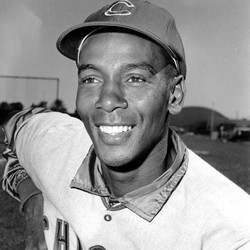 31 – On this date in 1931, Ernie Banks was born in Dallas. Banks attended Washington High School where he was a multi-sport star. He played with the Negro Leagues’ Kansas City Monarchs before becoming the first black player for the Major League Baseball Chicago Cubs. Known as “Mr. Cub,” Banks hit more home runs than anyone else in the majors from 1955 to 1960. He was elected to the Baseball Hall of Fame in 1977.
31 – On this date in 1931, Ernie Banks was born in Dallas. Banks attended Washington High School where he was a multi-sport star. He played with the Negro Leagues’ Kansas City Monarchs before becoming the first black player for the Major League Baseball Chicago Cubs. Known as “Mr. Cub,” Banks hit more home runs than anyone else in the majors from 1955 to 1960. He was elected to the Baseball Hall of Fame in 1977.
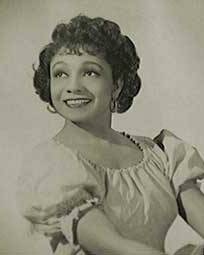 31 – On this date in 1934, Broadway and movie star Etta Moten (born in Weimar) sang for President and Mrs. Franklin D. Roosevelt at a White House dinner, marking the first time for an African-American woman to sing at the White House.
31 – On this date in 1934, Broadway and movie star Etta Moten (born in Weimar) sang for President and Mrs. Franklin D. Roosevelt at a White House dinner, marking the first time for an African-American woman to sing at the White House.
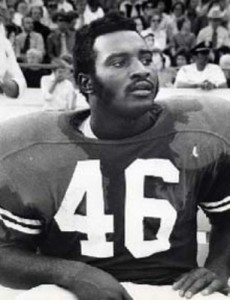 31 – Roosevelt Leaks, the first African-American Texas Longhorns player to earn All-America honors, was born on this day in Brenham, TX, in 1953. Leaks rushed for 2,923 yards and 26 touchdowns in his three seasons at Texas. “Rosey” was a consensus All-America selection in 1973 and finished third that year in Heisman Trophy voting. He played nine seasons in the National Football League with the Baltimore Colts (1975-79) and Buffalo Bills (1980-83).
31 – Roosevelt Leaks, the first African-American Texas Longhorns player to earn All-America honors, was born on this day in Brenham, TX, in 1953. Leaks rushed for 2,923 yards and 26 touchdowns in his three seasons at Texas. “Rosey” was a consensus All-America selection in 1973 and finished third that year in Heisman Trophy voting. He played nine seasons in the National Football League with the Baltimore Colts (1975-79) and Buffalo Bills (1980-83).
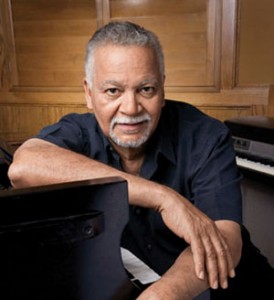 1 – Jazz pianist great Joe Sample was born on this day in Houston in 1939. Sample, a graduate of Phillis Wheatley High School in 1956, teamed with Wheatley classmates Wayne Henderson (trombone), Wilton Felder (saxophone), and drummer Nesbert “Stix” Hooper to form the Jazz Crusaders in the 1960s and the group became wildly successful and critically acclaimed. Sample began playing piano at age 5, and at age 16 entered Texas Southern University and studied there for three years before the Jazz Crusaders left Houston for Los Angeles to begin the group’s phenomenal career. Sample was a leader or sideman on multiple gold and platinum albums and was popular as a studio musician, including for Marvin Gaye’s “What’s Going On.”
1 – Jazz pianist great Joe Sample was born on this day in Houston in 1939. Sample, a graduate of Phillis Wheatley High School in 1956, teamed with Wheatley classmates Wayne Henderson (trombone), Wilton Felder (saxophone), and drummer Nesbert “Stix” Hooper to form the Jazz Crusaders in the 1960s and the group became wildly successful and critically acclaimed. Sample began playing piano at age 5, and at age 16 entered Texas Southern University and studied there for three years before the Jazz Crusaders left Houston for Los Angeles to begin the group’s phenomenal career. Sample was a leader or sideman on multiple gold and platinum albums and was popular as a studio musician, including for Marvin Gaye’s “What’s Going On.”
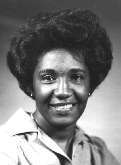 1 – On this date in 1936, Azie Taylor was born in St. John Colony in Dale, Texas, near Austin. Taylor married James Homer Morton on May 29, 1965, and in 1977, President Jimmy Carter named her the 36th Treasurer of the United States for which she is still the only African-American to have held the position. She was a graduate of Huston-Tillotson University.
1 – On this date in 1936, Azie Taylor was born in St. John Colony in Dale, Texas, near Austin. Taylor married James Homer Morton on May 29, 1965, and in 1977, President Jimmy Carter named her the 36th Treasurer of the United States for which she is still the only African-American to have held the position. She was a graduate of Huston-Tillotson University.
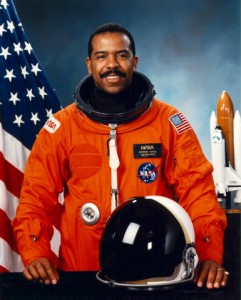 2 – In 1995, on this date, Dr. Bernard Harris, Jr. became the first African-American to walk in space. A native of Temple, Texas, Harris was payload commander aboard Space Shuttle Discovery Mission STS-63, the first flight of the joint Russian-American Space Program. The main objective of the mission was to test systems and techniques to be used on later missions to dock with the Russian Space Station Mir.
2 – In 1995, on this date, Dr. Bernard Harris, Jr. became the first African-American to walk in space. A native of Temple, Texas, Harris was payload commander aboard Space Shuttle Discovery Mission STS-63, the first flight of the joint Russian-American Space Program. The main objective of the mission was to test systems and techniques to be used on later missions to dock with the Russian Space Station Mir.
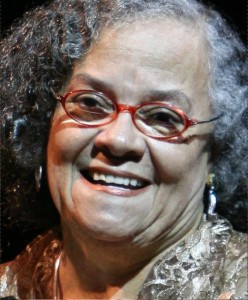 2 – On this date in 1927, musician Ernie Mae Miller was born in Austin. Miller was a graduate of L.C. Anderson High School, which was named for her grandfather. Miller played jazz, blues, gospel, and swing music and performed with the Prairie View Co-eds, a black, all-girl swing band from Texas that toured nationally during World War II.
2 – On this date in 1927, musician Ernie Mae Miller was born in Austin. Miller was a graduate of L.C. Anderson High School, which was named for her grandfather. Miller played jazz, blues, gospel, and swing music and performed with the Prairie View Co-eds, a black, all-girl swing band from Texas that toured nationally during World War II.
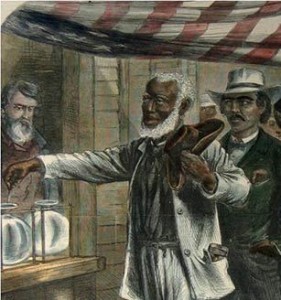 3 – On this day in 1870 the 15th amendment was ratified ensuring the right to vote to all male citizens of the United States, regardless of color or previous condition of servitude. The 15th Amendment opened the door for the elections of African-Americans to the U.S. Congress and to Southern local and state offices. Republicans wanted the 15th Amendment passed to obtain the vote of the freed
3 – On this day in 1870 the 15th amendment was ratified ensuring the right to vote to all male citizens of the United States, regardless of color or previous condition of servitude. The 15th Amendment opened the door for the elections of African-Americans to the U.S. Congress and to Southern local and state offices. Republicans wanted the 15th Amendment passed to obtain the vote of the freed
slaves. However, many women suffragists had worked alongside Black suffragists like Frederick Douglass to gain the right to vote for both groups. However, when the 15th Amendment passed, it angered many women suffragists and some of them spoke out against Black suffrage. Women would not gain the right to vote until 1920.
3 – On this day in 1956, Irma Jean Sephas became first African American undergraduate student at North Texas State University. Sephas, 41, was from Fort
Worth and majored in business with a music minor. She had previously attended Huston-Tillotson College in Austin.
5 – On this day in 1840, the Congress of the Republic of Texas passed the Law of February 5. Though there were relatively few free blacks in the republic, legislators concerned over the status of slavery attempted to restrict further the number of free blacks. The law declared that all free blacks who had entered Texas after the Texas Declaration of Independence must leave the republic within two years or be declared slaves for the rest of their lives. Those free blacks who were already in the republic before Texas independence would continue to have all the rights of their white neighbors. Provisions were made for free blacks who entered later to petition the Congress for exception.
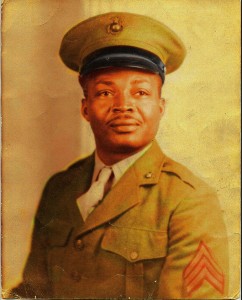 5 – Alfred Masters, the first African American to serve in the U. S. Marine Corps, was born on this day 1916 in Palestine, Texas. Masters was sworn into the marines June 1, 1942. After his swearing in, he trained at Montford Point, North Carolina where other African Americans were later trained (now known as the Montford Point Marines). Masters eventually rose to the rank of technical sergeant.
5 – Alfred Masters, the first African American to serve in the U. S. Marine Corps, was born on this day 1916 in Palestine, Texas. Masters was sworn into the marines June 1, 1942. After his swearing in, he trained at Montford Point, North Carolina where other African Americans were later trained (now known as the Montford Point Marines). Masters eventually rose to the rank of technical sergeant.
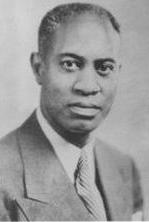 6 – Melvin Tolson, writer, educator, and poet, was born on this day in 1898 in Moberly, Missouri. A graduate of Lincoln (Mo.) University, Tolson began teaching speech and English at Wiley College in 1924. His award-winning debate team, which in 1935 beat the reigning national champion from the University of Southern California, had a 10-year winning steak between 1929 and 1939. Tolson also mentored students such as James L. Farmer, Jr. and Heman Sweatt. In 2007, his story and his team were portrayed in the film, “The Great Debaters.”
6 – Melvin Tolson, writer, educator, and poet, was born on this day in 1898 in Moberly, Missouri. A graduate of Lincoln (Mo.) University, Tolson began teaching speech and English at Wiley College in 1924. His award-winning debate team, which in 1935 beat the reigning national champion from the University of Southern California, had a 10-year winning steak between 1929 and 1939. Tolson also mentored students such as James L. Farmer, Jr. and Heman Sweatt. In 2007, his story and his team were portrayed in the film, “The Great Debaters.”
Blog: Ron Goodwin, author, PVAMU history professor
Ron Good  win’s bi-weekly blog appears exclusively for TIPHC/TBHPP. Goodwin is a San Antonio native and Air Force veteran. Generally, his column will address contemporary issues in the black community and how they relate to black history. He and the TIPHC/TBHPP staff welcome your comments. In his latest blog, “Perception is reality, really?” Goodwin examines the stereotypical negative public images of black males.
win’s bi-weekly blog appears exclusively for TIPHC/TBHPP. Goodwin is a San Antonio native and Air Force veteran. Generally, his column will address contemporary issues in the black community and how they relate to black history. He and the TIPHC/TBHPP staff welcome your comments. In his latest blog, “Perception is reality, really?” Goodwin examines the stereotypical negative public images of black males.
Submissions Wanted
Historians, scholars, students, lend us your…writings. Help us produce the most comprehensive documentation ever undertaken for the African American experience in Texas. We encourage you to contribute items about people, places, events, issues, politics/legislation, sports, entertainment, religion, etc., as general entries or essays. Our documentation is wide-ranging and diverse, and you may research and write about the subject of your interest or, to start, please consult our list of suggested biographical entries and see submission guidelines. However, all topics must be approved by TIPHC/TBHPP editors before beginning your research/writing.
We welcome your questions or comments via email or telephone – mdhurd@pvamu.edu, .

